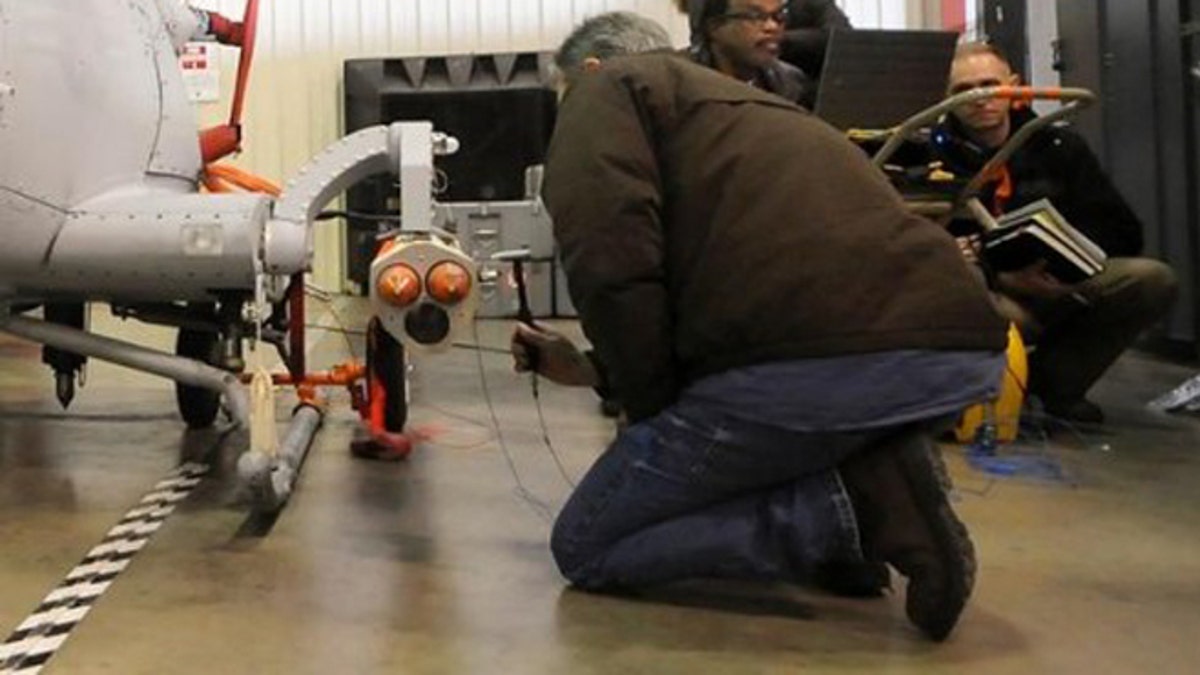
(DOD)
The U.S. Defense Department wants to arm more drones with lightweight, precision-guided weapons to support a larger range of combat missions.
As the war in Afghanistan ends and new threats emerge in the Asia-Pacific region, the Pentagon is considering adapting multiple weapons for drones, including the Cold War-era Hydra 70 rocket and the Laser Homing Attack or Anti-Tank Missile, or LAHAT, according to its latest report on the future of unmanned systems.
[pullquote]
“Unmanned systems can be used in significantly different operating and threat conditions than manned platforms, come in a much wider range of classes and sizes than manned systems, can exhibit greater persistence and endurance than manned systems, and have the potential to support a large range of mission sets,” the recently released report states.
The 168-page document, “Unmanned Systems Integrated Roadmap: FY2013-2038,” outlines the department’s long-term strategy for adopting the technology and was approved by Frank Kendall, the Pentagon’s top weapons buyer, and Navy Adm. James Winnefeld, vice chairman of the Joint Chiefs of Staff.
- Invisible hunters of invisible men: OpticsPlanet kit to find an invisible man
- Cyberwar, high-tech weapons take center stage in defense budget
- 68 best shots of military tech in action
- Pioneering computer scientist Alan Turing pardoned (finally) for being gay
- Battlehawks and rocks that spy: 3 wild new military technologies from AUSA
The Pentagon plans to spend almost $24 billion on unmanned air, ground and maritime systems over the next five years through fiscal 2018, according to the document. While research and development funding for drones is expected to fall by $1.3 billion — more than a third — from fiscal 2013 to fiscal 2014, overall spending on the technology is expected to total at least $4.1 billion in the fiscal year that began Oct. 1.
As the department develops systems that can operate in contested areas such as the Asia-Pacific, it’s trying to find ways to arm its nearly 11,000 aerial drones with existing weapons.
The Laser Homing Attack or Anti-Tank Missile, or LAHAT (Hebrew for “incandescence”), is a 3-foot-long, 30-pound projectile made by the Israel Aerospace Industries. A complete launcher houses four of the missiles. Initially developed for 105mm and 120mm tank guns, the weapon can hit targets from more than six miles away and has been tested on the RQ-5 Hunter drone, according to the Pentagon report.
The so-called SPIKE missile was developed by the U.S. Navy and Italy’s Finmeccanica SpA’s DRS Technologies unit as a portable weapon for Marines and Navy SEALs, according to the report. The 2-foot-long, 5-pound laser-guided missile could also be used to defense ships from swarms of small boats or aircraft, and it has undergone testing on DRS’s Sentry HP drone at Eglin Air Force Base, Fla., the document states.
Even the Hydra 70 rocket, a longtime staple on attack helicopters such as the AH-64 Apache and a weapon that dates to the Korean War, is finding new life aboard unmanned aerial vehicles. The 3.5-foot-long, 13.5-pound rockets made by General Dynamics Corp. have been fired from a Vigilante drone developed by SAIC Inc. in a test at the U.S. Army’s Yuma Proving Ground.
The Pentagon plans to arm unmanned helicopters with Hydra 70 rockets as part of the so-called Advanced Precision Weapon Kill System, which is designed to fill a gap between Hellfire missiles and unguided Hydra rockets. The Navy last year began arming the the MQ-8B Fire Scout helicopter drone with the system, which uses a launcher originally developed for the Army’s canceled Comanche attack helicopter.
The Army and Marine Corps are also looking at ways to further incorporate the 2-pound kamikaze drone called Switchblade and developed by AeroVironment Inc. The system can be launched by hand and fly directly into a target.
“Adapting proven weapons technology with new concepts to take advantage of unmanned systems persistence and emerging net-centric capability, manned and unmanned teaming will be critical to improving the sensor-to-shooter equation and further decreasing in the kill chain timeline,” the report states.
